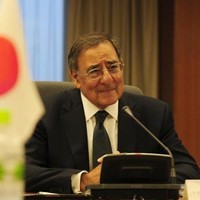This weekend’s parliamentary elections have returned Japan's Liberal Democratic Party (LDP) and its leader, former Prime Minister Shinzo Abe, to power after several years of rule by the centrist Democratic Party of Japan (DJP), led by outgoing Prime Minister Yoshita Noda. The LDP is projected to have increased its total to around 300 seats in the 480-seat lower house. Combined with its long-time partner New Komeito, the LDP’s right-wing coalition government might enjoy a two-thirds majority, which is required to amend Japan’s constitution.
Though the DJP, which assumed power in 2009, was unable to overcome many of its early domestic policy setbacks, it did reverse its main initial foreign policy mistake: its early distancing from Washington. The Japan-U.S. security relationship rebounded from the DJP’s initial efforts to revise the Okinawa basing agreement with Washington and its stated intention to pursue a more balanced foreign policy between the U.S. and China, which the LDP has denounced as appeasement. In some respects, the alliance has never been stronger, and the DJP has offered the LDP, as well as the United States, a firm foundation on which to build.
During the Cold War, the Pentagon considered Japan the anchor of U.S. strategy in East Asia because of its strategic location, economic power, self-defense capabilities and willingness to host a large military presence. In return for the United States’ commitment to defend Japan against external attack, the Japanese contributed to their own self-defense while providing financial and other support to U.S. policy objectives, including by hosting U.S. military facilities on Japanese territory.

